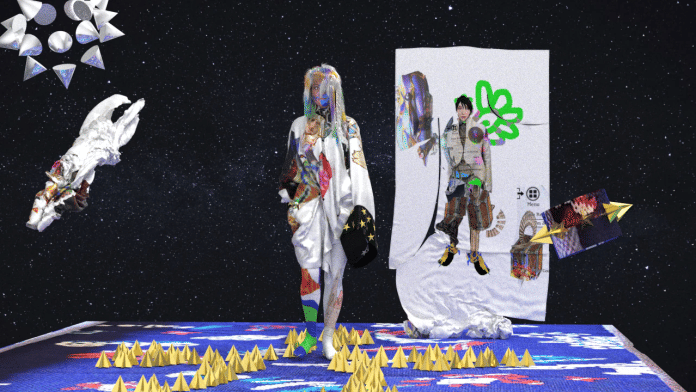Fashion is undergoing a profound transformation that goes far beyond the introduction of new technologies. It is driven by a deeper cultural shift, one that challenges the very foundations of how we perceive identity, ownership and expression.
As digital platforms reshape the way we connect across the globe, we are witnessing the convergence of emerging technology, creativity and a growing global consciousness, which is reimagining what fashion is, who gets to define it and how it intersects with our everyday lives.
We are no longer just talking about physical clothes. Today, fashion is defined by code, pixels and purpose. With the rise of digital fashion, ranging from non-fungible token (NFT) wearables and avatar styling to immersive wardrobes in virtual environments, a new paradigm is emerging. This paradigm transcends the limitations of the physical world, offering an entirely new way to express personal and cultural identity. It creates spaces where the fluidity of digital avatars, constantly evolving designs and infinite customization possibilities allow individuals to explore and manifest their style without the constraints of traditional fashion.
Luxury fashion collaborations
A pivotal driver of this transformation is the growing intersection of luxury fashion with the digital realm. Collaborations like Balenciaga’s partnership with Fortnite signify more than just a crossover between fashion and gaming, they represent a complete rethinking of what luxury means in the digital age. By introducing digital skins as coveted fashion items within a virtual world, Balenciaga made a bold statement that the digital space is not just a trend but an essential part of future cultural engagement. This partnership transformed virtual fashion from something trivial to a powerful symbol of status and exclusivity, making digital fashion a new form of luxury that appeals to an entirely new audience, digitally fluent, younger generations who are shaping the future of style.
RTFKT’s collaboration with Nike – which ended earlier this year after four years – took this concept even further by integrating blockchain technology to authenticate and trade digital sneakers. These were not just pixels on a screen but authenticated, tradable assets that users could own, collect and resell in blockchain-powered marketplaces. By linking digital assets to physical products, RTFKT introduced the concept of “phygital” fashion, where digital and physical worlds merge seamlessly. This not only redefined ownership but also reshaped the way we think about fashion value.
Ownership models in the digital realm
The rise of digital wearables within blockchain-based ecosystems also represents an entirely new revenue model, one where creators retain ownership of their work through smart contracts and co-ownership frameworks, further empowering them to monetize their designs in innovative and transparent ways.
Fashion is now a dynamic, multifaceted ecosystem in which digital tools democratize design. These platforms open up creative possibilities to designers from all socioeconomic and cultural backgrounds, offering a global stage for work that previously might not have been seen. Technologies like 3D design software (such as CLO) have become game changers, allowing designers to create full collections digitally before even producing a physical sample. This has dramatically sped up design iterations, improved decision-making processes and reduced environmental waste from sample production. The ability to digitally sample designs before physical manufacturing accelerates innovation while promoting more sustainable practices. Designers can experiment, collaborate and refine concepts in a virtual space, which leads to a more agile, efficient fashion ecosystem.
This revolution in fashion isn’t just about technological advancement, it’s a response to broader cultural demands for inclusivity, sustainability and authenticity. Digital fashion offers a sustainable alternative to traditional systems by eliminating the need for raw materials, shipping and overconsumption, which are major contributors to the environmental crisis. Fashion in the digital realm is no longer tethered to physical production constraints; it exists as a low-impact alternative that is both innovative and responsible.
Virtual garments can evolve in real time, morphing with the user, inviting interaction and encouraging co-creation. They represent a shift from passive consumption to dynamic, personalized experiences, where the act of wearing a garment is a collaborative process between the designer and the user.
Shaping the future of fashion
The shift toward digital fashion represents more than just a passing trend, it could be the strategic blueprint for the future of the fashion industry. It introduces a new model grounded in inclusivity, cultural relevance and sustainable innovation. As fashion becomes more about storytelling and experience, it moves beyond the superficiality of aesthetics. It embodies values that resonate with a global, interconnected audience that is increasingly demanding products and experiences aligned with social impact and environmental responsibility.
In this new era, success will not be defined solely by traditional metrics of beauty or trendiness. Instead, it will depend on how well the industry can integrate cutting-edge digital innovations with authenticity, purpose and community-driven values. The real question is no longer what fashion looks like or how it’s made, but who gets to shape it and why it matters.
As the boundaries between physical and digital worlds blur, the future of fashion will be determined not just by designers or brands, but by the collective power of individuals who are redefining culture, expression and identity in ways that were once unimaginable. The stage is set for a more inclusive, sustainable and participatory fashion ecosystem — one where creativity and human values drive the industry’s next evolution.
This article first appeared in the World Economic Forum. Read the original piece here.






